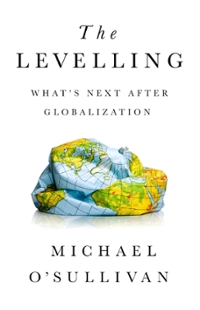Question
Here are some questions, I know the answers but I don't know how to get it. I would love a step by step explanation for
Here are some questions, I know the answers but I don't know how to get it. I would love a step by step explanation for each question to get to that answer. Probably something simple and easy to understand. Thank you.
I put the answers in bold and underlined
The diagrams of some questions will be at the bottom of the document.
1. The cigarette, airline manufacturing and video gaming console industries are examples of:
A) perfect competition.
B) monopoly.
C) oligopoly.
D) monopolistic competition.
2. If there are significant economies of scale in an industry, then we expect:
A) many small firms in the industry.
B) entry to that industry will be easy.
C) as firms increase quantity, their long run average total costs would decrease
D) none of the above.
3. Which of the following would include a market that has many small firms with differentiated products, such as dentists or restaurants in Houston?
A) perfect competition.
B) monopoly.
C) oligopoly.
D) monopolistic competition.
4. If you operated a small restaurant, which of the following would be a fixed cost?
A) the money you spent on equipment and furniture
B) the wages you pay your workers
C) the food supplies you buy to make the food you will serve
D) none of the above
5. Over the long run, we would expect economic profits of firms in perfect competition to be:
A) very large
B) not very large, but still positive
C) 0, just enough to cover their explicit and implicit costs
D) negative, because there is so much competition
6. At a small factory, the owner notices that as more and more workers are hired, the additional quantity produced per worker eventually reaches a maximum and then decreases. This is an example of:
A) economies of scale
B) the law of diminishing returns
C) the law of supply
D) none of the above
7. Monique is considering switching jobs. Her current job pays $50,000 per year. Her new job would pay $60,000 per year, but she would need to pay $2000 to buy her own laptop computer. What is Monique's implicit cost of taking the new job?
A) 0
B) $2000
C) $50,000 per year
D) none of the above
Refer to this chart for questions 8-10:
Quantity Total Costs
0 $400
1 $500
2 $580
3 $630
4 $700
5$800
6 $960
8. Refer to the above data. The total variable cost (TVC) of producing 4 units is:
A) $700
B) $400
C) $300
D) none of the above
9. Refer to the above data. The average total cost (ATC) of producing 6 units of output is:
A) $80
B) $160
C) $960
D) none of the above
10. Refer to the above data. The marginal cost (MC) of producing the 5th unit of output is:
A) $100
B) $800
C) $400
D) none of the above
11. In microeconomics we use the MR = MC rule because:
A) Profit = MR - MC
B) it identifies the quantity that maximizes profit
C) when MR = MC, ATC is at its minimum
D) none of the above
12. Which of the following is *not* a reason that monopolies may occur?
A) control of a key natural resource
B) economies of scale are large and never end
C) patents or copyrights
D) none of the above
13. Which of the following is true?
A) explicit costs are always greater than implicit costs
B) accounting profit cannot be less than economic profit
C) accounting costs are always greater than economic costs
D) none of the above
14. From the diagram below, we know that:
A) this firm is not in a perfectly competitive market
B) this firm will earn a positive profit
C) this firm has economies of scale
D) none of the above
15. In which market model must firms consider the actions of their competitors to help determine their profit-maximizing quantity?
A) perfect competition.
B) monopoly.
C) oligopoly.
D) monopolistic competition.
16. The table below table shows a firm's quantity produced and the corresponding prices buyers are willing to pay. What is the marginal revenue of the 4th unit?
QuantityPrice
0
1$100
2 90
3 80
4 70
5 60
6 50
7 40
8 30
9 20
10 10
A) $280
B) $70
C) -$10
D) none of the above
Use this diagram for questions 17-19:
17. In this diagram, this firm should charge what price?
A) P1
B) P3
C) P5
D) none of the above
18. In this diagram, the firm would earn:
A) a substantial positive profit
B) a very small positive profit
C) 0 profit
D) a negative profit
19. This diagram could fit which of these market models best?
A) oligopoly with differentiated product
B) oligopoly with standardized product
C) perfect competition
D) monopoly
20. Use this chart and assume that the firm is in perfect competition and the price is $80. What is this firm's maximum profit?
Quantity Total Cost ($)
0 $ 40
1 $ 100
2 $ 130
3 $ 180
4 $ 240
5 $ 320
6 $ 480
A) $100
B) $80
C) 0
D) none of the above
DIAGRAM FOR QUESTION 14:


Step by Step Solution
There are 3 Steps involved in it
Step: 1

Get Instant Access to Expert-Tailored Solutions
See step-by-step solutions with expert insights and AI powered tools for academic success
Step: 2

Step: 3

Ace Your Homework with AI
Get the answers you need in no time with our AI-driven, step-by-step assistance
Get Started


